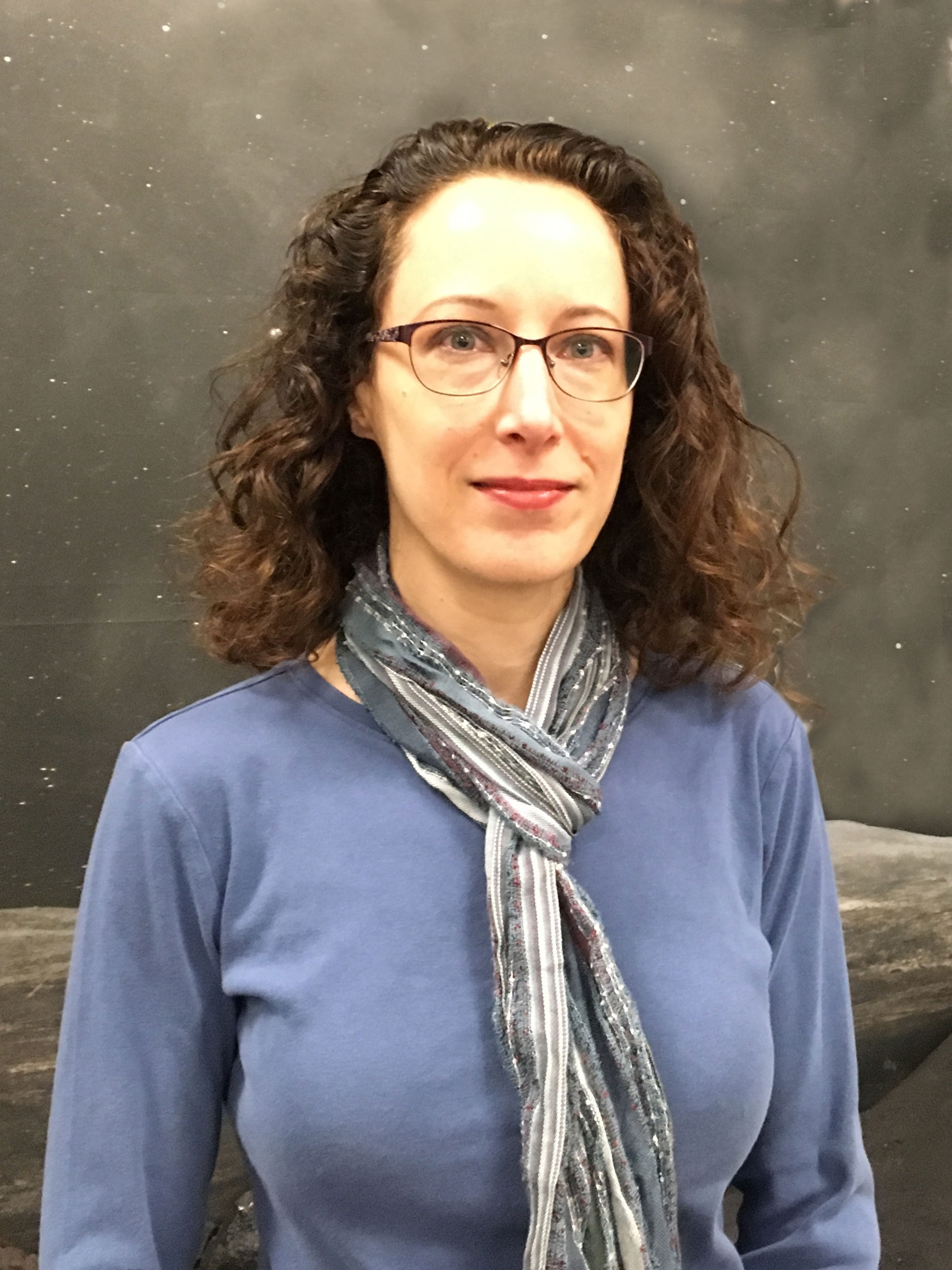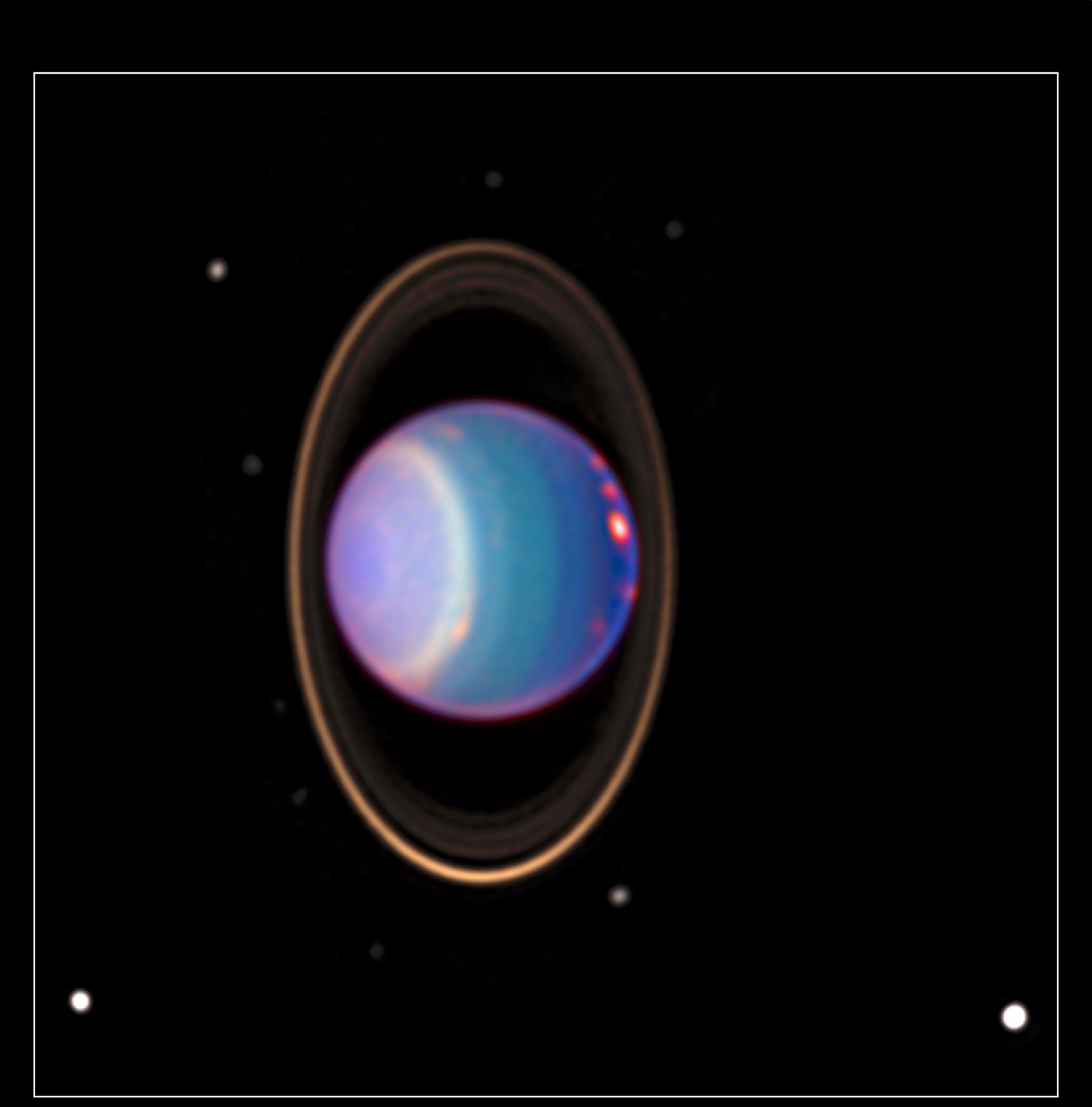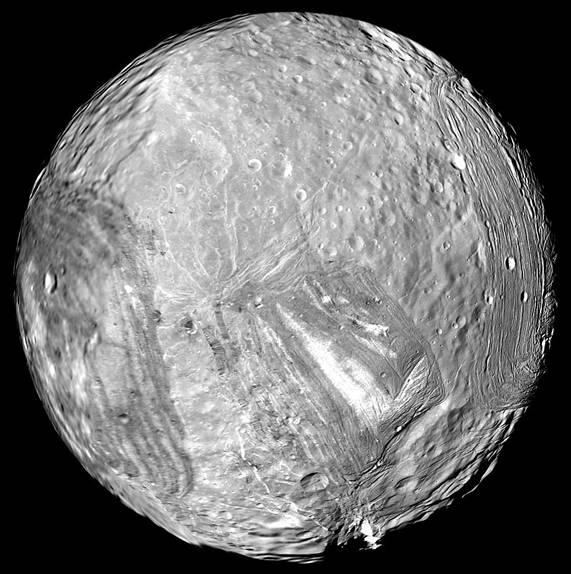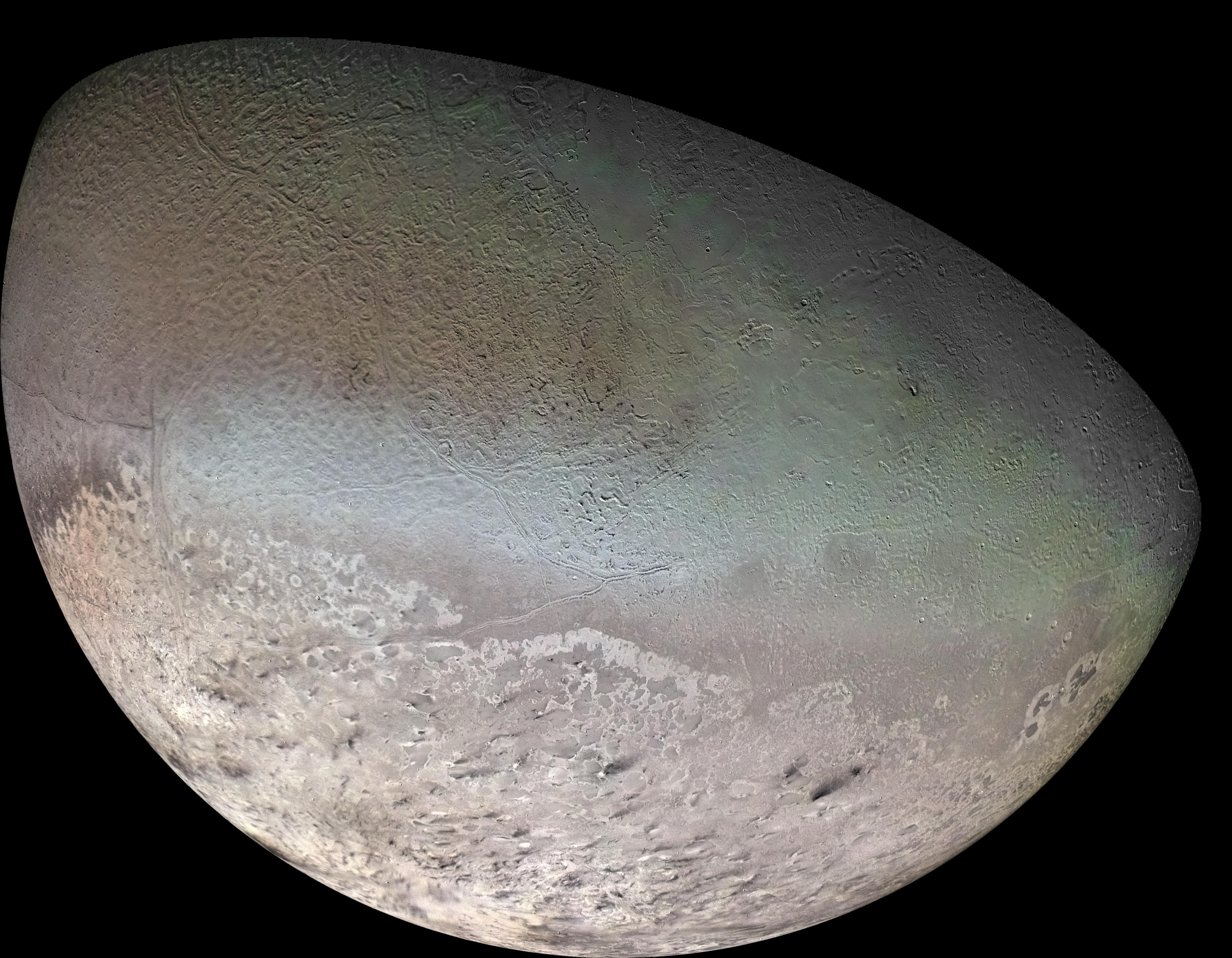Gravity Assist Podcast: Uranus and Neptune, with Amy Simon
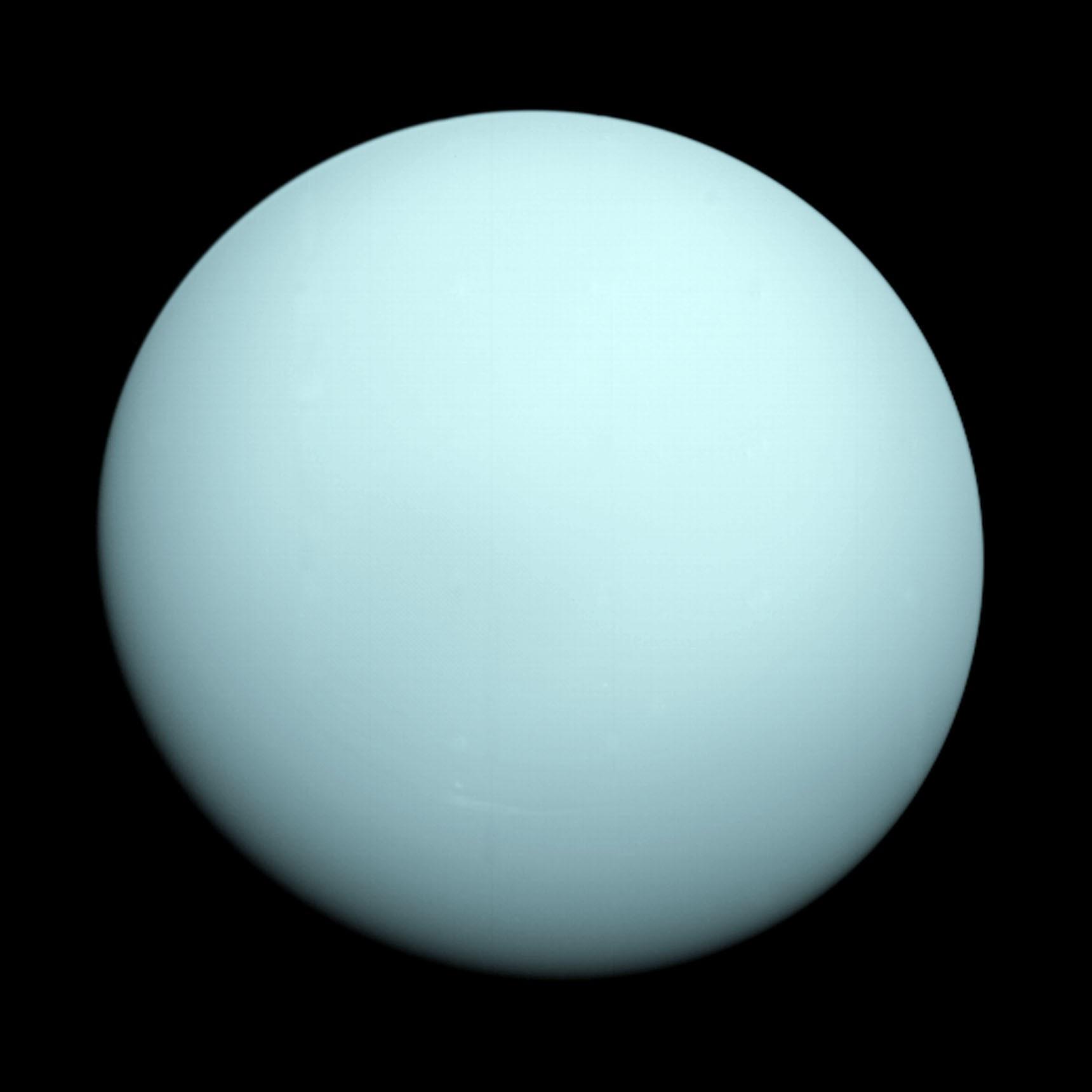
The Gravity Assist Podcast is hosted by NASA's Director of Planetary Science, Jim Green, who each week talks to some of the greatest planetary scientists on the planet, giving a guided tour through the Solar System and beyond in the process. This week, he's joined by Amy Simon of the Goddard Space Flight Center to talk about not just one, but two planets of the Solar System: the ice giants Uranus and Neptune, as well as Neptune's moon Triton.
You can listen to the full podcast here, or read the transcript below.
Jim Green: Uranus and Neptune are probably the least known of all our planets, and the reason, of course, is only one spacecraft has visited them, and that's Voyager 2 — which flew by Uranus in 1986 and Neptune in 1989. We call these planets the ice giants, but Amy, what do we mean by ice giants? [NASA Eyes Close-Up Mission to Uranus, Neptune]
Amy Simon: Uranus and Neptune are really unique in our Solar System. They're very different planets [than the other worlds in our Solar System]. Part of the reason we call them ice giants is because they actually [contain] a lot of water-ice. So, while [Jupiter and Saturn are] gas giant planets with mostly hydrogen and helium, the ice giants are predominately water and other ices.
Jim Green: How were they able to acquire that much ice?
Amy Simon: They formed much further out in the Solar System where there was a lot of ice available. They didn't quite form as big as Jupiter or Saturn, so they couldn't pull in quite as much gas. That's part of why we believe they're so different.
Jim Green: Some of the simulations of how our planets form seem to indicate that they formed closer to the Sun, and then through gravitational interactions, were pushed out. That includes Uranus and Neptune. Could they have acquired a lot of the Kuiper Belt objects as they were doing that?
Breaking space news, the latest updates on rocket launches, skywatching events and more!
Amy Simon: Absolutely. As a matter of fact, we think that a lot of Neptune's moons are captured Kuiper Belt objects.
Jim Green: Yeah, that kind of gives it away a little bit, I think. Of course, that one moon that we love so much at Neptune, called Triton, is such an unusual body and it was quite a shock when Voyager 2 saw it for the first time. Why is Triton such a different moon?
Amy Simon: For one thing, we think Triton has geysers on it, but these aren't geysers like we're used to on Earth where we have hot water and steam. It's so cold [on Triton] that there is actually nitrogen-ice spewing out of the surface. So, that's really weird to start with.
But, if you move away from the south pole of Triton, then you get into this weird terrain that we call "cantaloupe terrain," because it looks like the skin of a cantaloupe. It's all wrinkly. We have no idea what's forming that. And we've never even seen the other side of Triton, so who knows what's there?
Jim Green: Are there any analogies between that cantaloupe terrain on Triton and some of the terrain we see on Pluto?
Amy Simon: There is some, and a lot of it has to do with the fact that they're so cold. Even though they're cold, they still have some sort of activity that's moving the ice around. We think that Triton and Pluto actually have quite a lot in common, and that's something we'd like to go back and learn a lot more about.
Jim Green: Triton's such a spectacular moon. It's larger than Pluto, and as we talked about, it may actually be a Kuiper Belt object. It also has a funny orbit around Neptune.
Amy Simon: Right. All the planets in our Solar System move in the same direction, and they all pretty much rotate in the same direction. All their moons go around them in the same direction. But, Triton doesn't. It's retrograde, [meaning] it's going backwards. This is partly because we think it was captured, so it got too close to Neptune and got stuck there.
Jim Green: How hard is it to see Uranus and Neptune from the Earth?
Amy Simon: They are so far away, they're just really faint. The ancient astronomers that originally found the other planets didn't even see Uranus and Neptune. It took telescopes to find them. So, if you were to go out and look, you'd have to know exactly where to look, and you'd still need a telescope to be able to find them.
Jim Green: When were they discovered?
Amy Simon: Uranus was first seen by [William] Hershel in 1781. Neptune wasn't seen for almost 50 years later, in 1846.
Jim Green: The discovery of Neptune is really kind of fascinating in the sense that observing Uranus really gave away the fact that there's something else out there. How did that happen?
Amy Simon: It is interesting. How they inferred all these outer planets was they were looking at the orbits of planets closer in and kept seeing them being tweaked a little bit. They kept inferring there had to be something else out there or something with a lot of mass [gravity] pulling them around. So, that's kind of how we got an idea there was a Uranus and a Neptune. But, even after that, we still thought there was more mass out there, which led to the hunt for Pluto. [Editor's note: Ironically, Pluto turned out not to be massive enough to perturb Uranus or Neptune, and discrepancies in the orbits of the ice giants were reconciled by more accurate measurements of their masses.]
Jim Green: Uranus seems so featureless. Why does it look like that?
Amy Simon: I think poor Uranus is misunderstood, actually. Uranus is very bland in appearance most of the time. It's kind of a pale blue planet. It's the real pale blue dot. Part [of the reason for that] is it is so cold, and it doesn't have a lot of internal heat. All of our outer giant planets give off more heat than they receive from the Sun except for Uranus. We think that is slowing down convection inside the planet. You don't get the equivalent of thunderstorms, so you don't see the bright clouds on Uranus that you see on the other planets.
Jim Green: Another really fascinating aspect about Uranus is its rotational axis. It's so different than all the other planets. Why is that?
Amy Simon: That's another big puzzle. Uranus is tilted over on its side. [Imagine] you were looking straight up in the Solar System, that would be zero degrees. It's tilted over by 98 degrees. So, it is pretty much rolling around on its side. We have no [theoretical] way of making it do that. The best guess we have at the moment is that, while it was forming, it collided with something even bigger or as big, and it got knocked over. So that's a real puzzle when we try to explain how the Solar System formed.
Jim Green: Are all Uranus' moons in the same plane in the equatorial region?
Amy Simon: They are. It's a little different than what we can see on the other planets because it is tilted on its side. We get a different view than we do when we fly by other planets.
Jim Green: In addition to the fabulous moons that Uranus has, doesn't it have rings?
Amy Simon: That's correct. All of the outer planets have rings around them. And Uranus' are very narrow. It has about nine rings. They're hard to see because they are so narrow. We were able to see them with Voyager 2, and that's how we discovered them. [Editor's note: The rings were actually discovered in 1977 by James Elliot, Edward Dunham and Jessica Mink during a stellar occultation, where a background star winked on and off as it moved behind the rings from our point of view.]
But, rings are great because they're one way that we actually can do kind of the equivalent of seismology on the planets. We can look at how the rings oscillate and how their shapes change and learn a little bit about the inside of the planets.
Jim Green: So, the planet must be shaking and moving the rings back and forth. That's pretty astounding.
Amy Simon: We've learned this while looking at the other planets, at Saturn especially, because it has such extensive rings. The fact that we have rings at all around the outer planets tells us they're pretty common. But, they're also very different from each planet. It tells us that we don't actually know what forms a ring and keeps a ring.
Jim Green: Does Uranus have a magnetic field?
Amy Simon: It does have a magnetic field, and it's a lot different than what we have here on Earth, where we have a north magnetic pole and a south magnetic pole. For both Uranus and Neptune, [the magnetic field is] offset from the center. So, it's not directly in the center of the planet, and it's also not just a north and south [orientation]. It's actually kind of a "multi" pole. If you can think about two magnets crossed with each other, it's almost like that. It's really strange.
Jim Green: So, we've really got to go back to these planets and visit them. There's so much for us to learn.
Amy Simon: Absolutely.
Jim Green: Let's move our discussion on to Neptune. What did Voyager 2 discover about Neptune during its fly-by that really surprised us?
Amy Simon: Neptune and Uranus are not at all like each other in a lot of ways. Besides being much more Earth-like in its tilt — Neptune's tilted about 28 degrees [Earth is tilted by 23,5 degrees] — it's not the same color as Uranus. It's a deeper blue, and when we got there, we were shocked to see it had a Great Dark Spot, which was a big storm that was raging in the atmosphere of Neptune.
Jim Green: A dark spot? You mean sort of like the Great Red Spot on Jupiter?
Amy Simon: Exactly the same type of thing. It's a gigantic anti-cyclone, so it's a high-pressure storm. It was raging throughout the entire Voyager fly-by. But, when we looked again with Hubble when we could first look at Neptune, it was gone.
Jim Green: On Jupiter and Saturn, we're seeing lightning. Has there ever been lightning detected on Uranus and Neptune?
Amy Simon: We haven't seen lightning, but that's partly because we expect lightning to form in the water-ice clouds, and on these cold planets the water-ice is deep down. We're actually seeing methane ice clouds when we see clouds on Neptune, and we haven't seen lightning yet.
Jim Green: Does Neptune have a ring, also? What do we know about it?
Amy Simon: Neptune does have rings, as well, but these are not as well formed as what we see around the other planets. They're kind of clumps. We see arcs — partial rings — at various points around the planet.
Jim Green: In addition to Voyager 2 discovering Neptune's rings, there's also other techniques that we've used to discover and look at the rings of Uranus and Neptune. What's the most important technique?
Amy Simon: The best technique we have, especially since we're not up close to them, is to use stars. When a star passes behind the planet, it gets dimmed out. Well, it turns out, when it passes behind the rings, the same thing happens. So, we can watch a star twinkling in and out as it goes behind Neptune and its rings.
Jim Green: Are there any other moons besides Triton that are notable?
Amy Simon: Both Neptune and Uranus actually have quite a few satellites around them. In the case of Uranus, they're all fairly small, although we think some of them do have interesting ice on their surface, as well. For Neptune, there's that one big moon, which is Triton, and then the rest are much smaller. So, it's more similar to what we see around Saturn.
Jim Green: You know, it'd be fantastic to go back to either one of these and take a look at the moons more carefully. I'd be willing to bet we could find some captured comets, too.
Amy Simon: Oh, I think we'd find all sorts of interesting things. We have no idea how many of these moons might be active and actually helping to form the ring systems, for example. That's what we found at Saturn with Enceladus. And the fact that we haven't seen the other side of any of these moons, we have no idea what's out there.
Jim Green: I think we're gonna learn an enormous amount when we have an opportunity to return and really spend some time at Uranus and Neptune. What are some of the mission ideas that we've been talking about?
Amy Simon: We've studied quite a lot of different ways to get out to Uranus and Neptune. I think the biggest problem is they're just so far away, so you can't get out there very fast.
So we've looked into whether we could do a fly-by mission, which is similar to what Voyager 2 did, and if you did that, what would you add? I think the primary thing we'd add to any mission is an atmospheric probe, because we want to understand what the layers are in the atmosphere, what the temperatures are. We have also looked at orbiters, and these are nice because it gives you a chance to explore that whole system — the rings, the moons, Triton in particular — to see what's going on on all sides of those different moons.
Jim Green: When we look at other planets around other stars and we try to figure out what the most populous type of exoplanet is, it turns out that the most common are mini- neptunes. So, this tells us that Uranus and Neptune are objects that we really need to study further. How are we studying them today?
Amy Simon: We're actually looking every year now at both of these planets with the Hubble Space Telescope. We've also been using the Kepler Astrophysical Telescope to look at the light curves [i.e. a graph of how their brightness changes with time] and study how their clouds are changing. Even if we can't see the clouds, we can see the change in their light curves. So, we're using as many different ground-based and space-based observatories as we can to look at both Uranus and Neptune.
Jim Green: What kind of things are we finding out from the Hubble and Kepler observations?
Amy Simon: At the moment we're seeing a lot more clouds on Neptune, and we're finding that they vary on really short time scales, and that's partly because Neptune has winds that blow at hundreds of miles an hour. So, those clouds change really fast. In the last few years we've also seen another Great Dark Spot. We discovered it with Hubble, and we've been able to watch it get smaller and eventually disappear. And we think [the dark spots] move around a little bit, too, which is interesting.
Uranus, on the other hand, has been really, really quiet. When it passed its northern hemisphere equinox in 2007, kind of its springtime, we suddenly saw an outbreak of clouds all over the place, but we haven't seen a whole lot since then. We just see occasional ones. So they really are quite different planets from each other.
Jim Green: One of the things that the Cassini spacecraft found at Saturn was that the rings were really shading the planet during certain seasons and causing all kinds of changes in the atmosphere. How long does it take for seasons on Uranus and Neptune?
Amy Simon: A year on Uranus is about 84 [Earth] years. Each of its seasons is 21 [Earth] years. Because Uranus is tilted over on its side, that means that, for example, the south pole wouldn't see sunlight for about 40 years. It's got really extreme seasons, which help to drive the weather.
Neptune takes 164 years to go around the Sun, so almost twice as long, but it doesn't have that extreme tilt. We haven't, at least by this point, been able to observe any seasonal changes because we haven't been observing long enough.
Jim Green: I ask all my guests how they got into this business, what was their 'gravity assist' that propelled them forward and made them the scientist they are today. Amy, what's yours?
Amy Simon: I think I had a two-body gravity assist, actually, the first one being when the shuttle program came around and Sally Ride — I really wanted to be an astronaut, to be the first woman on Mars. But, honestly, the second one was Voyager 2 and when it flew by Uranus and Neptune and you saw all these exotic worlds and pink ice and all sorts of blue colors, I was so just so enthralled by the planets, I really wanted to be a planetary scientist.
Jim Green: I can resonate with that. Those are just tremendous events that have happened in our space program, and like many others, they have indeed inspired another generation. Amy, you've been working for Goddard now for several years. How did you become an employee for NASA?
Amy Simon: My start actually was working on the Galileo mission to Jupiter, and I was doing that as a student and got invited to do a post-doctoral position working on Galileo, at which point I got asked if I would like to also help out with Cassini, which was on its way to Saturn. And the instrument I was working at was based at NASA Goddard. So, eventually, I moved down to NASA Goddard.
Jim Green: As a civil servant, you provide opportunities during the summer for students to come and work. How many students have been involved in your organization?
Amy Simon: It depends on the summer, but some summers we have hundreds and hundreds of students at the center doing all sorts of projects, from engineering to science and through all of the different science fields that we have.
Jim Green: Any student who would like to work during the summer should visit www.nasa.gov, and do a search on summer employment. [Also, see the NASA Pathways program: https://nasajobs.nasa.gov/studentopps/pathways.htm]
This story was provided by Astrobiology Magazine, a web-based publication sponsored by the NASA astrobiology program. This version of the story published on Space.com. Follow us @Spacedotcom, Facebook or Google+.

The National Aeronautics and Space Administration (NASA) is the U.S. government agency in charge of the civilian space program as well as aeronautics and aerospace research. Founded in 1958, NASA is a civilian space agency aimed at exploring the universe with space telescopes, satellites, robotic spacecraft, astronauts and more. The space agency has 10 major centers based across the U.S. and launches robotic and crewed missions from the Kennedy Space Center in Cape Canaveral Florida. Its astronaut corps is based at the Johnson Space Center in Houston. To follow NASA's latest mission, follow the space agency on Twitter or any other social channel, visit: nasa.gov.

